After seven games in the 2024/25 Serie A season, Juventus have established themselves as early contenders, largely thanks to their remarkable defensive record.
New manager Thiago Motta has tweaked things slightly for Juve, including a formation change, but he’s also leaned into their strong defensive foundation—they had the second-best defensive record in the league last season.
At the time of writing, Motta’s side are yet to concede from open play in the Serie A this term, conceding just once from the spot in their 1-1 draw with Cagliari.
In this tactical analysis, we will examine Juventus’s defensive tactics so far in 2024/25, providing insight into Motta’s defensive setup.
Juventus Counterpress
Under Motta, we’ve seen Juve play a possession-based system that aims to involve less defensive work – the opponents find it harder to score if they can’t get the ball from Juve.
At the time of writing, Juve’s average ball loss per 90 is 70.19, the lowest in Serie A after seven games; we know that Juve pride themselves on making possession count, but they also want to give the opposition as little chance on the ball as possible, and Motta’s tactics seem to be achieving that.
With that comes a low engagement in general when it comes to defensive duels and interceptions, but Juventus like to be proactive in those rare moments when they do lose possession.
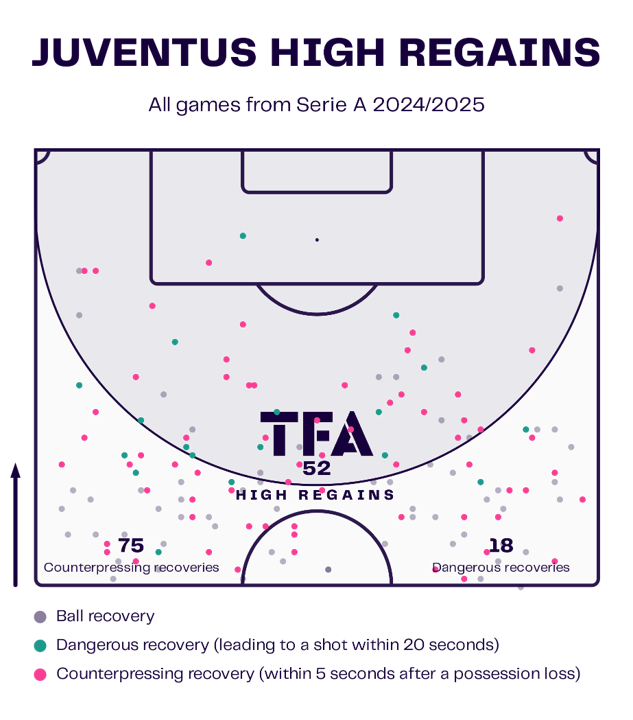
Figure 1 shows just how proactive Motta’s side is during transitions.
They look to instantly suffocate the opposition and limit their chances of executing a counterattack.
75 counterpressing recoveries in seven games is a strong indicator of their consistency in this regard, not to mention their ability and tendency to counterpress in a variety of areas, particularly in midfield.
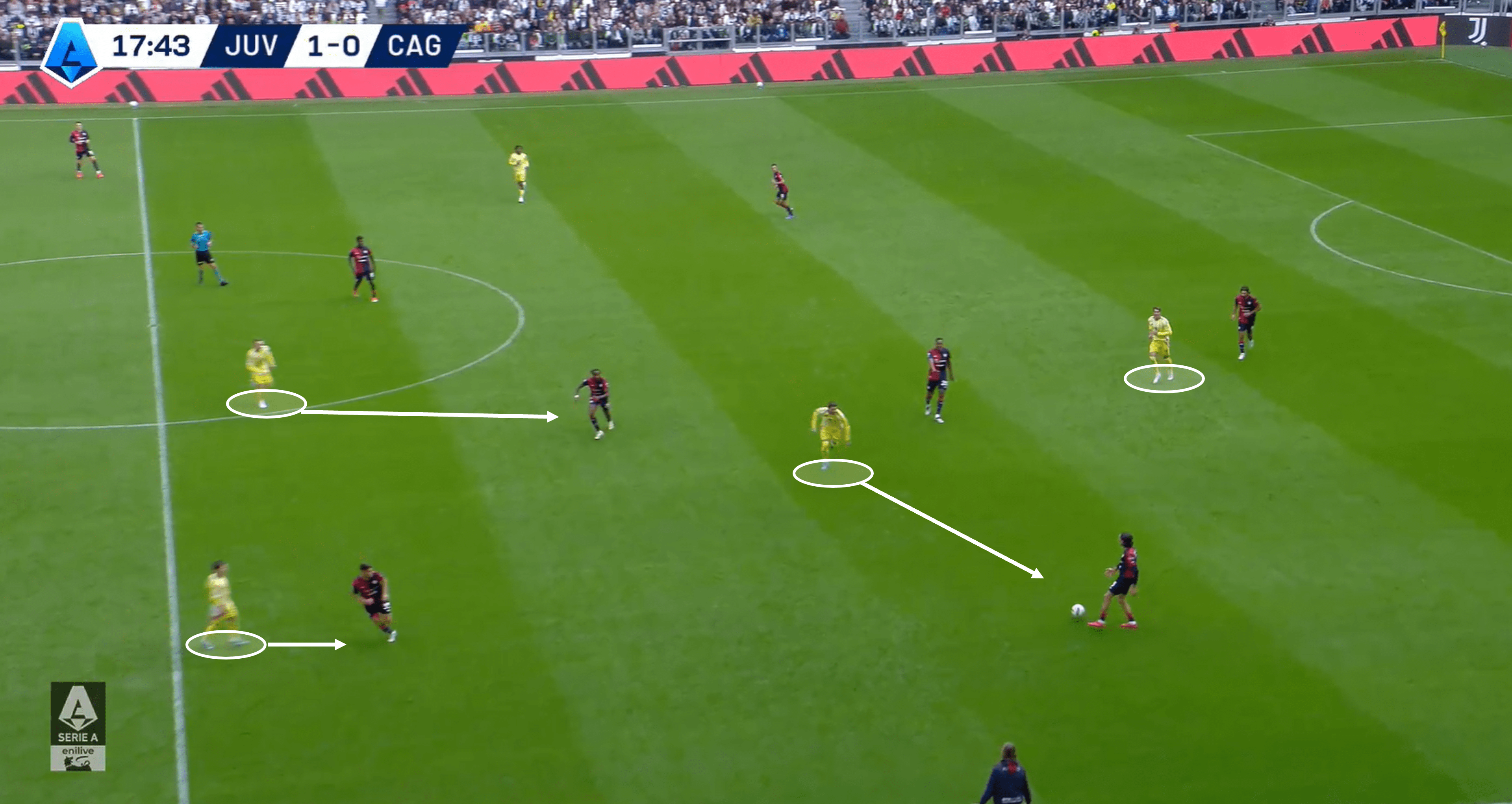
This analysis image gives us an idea of the individual and unit roles that Juve require in a counterpress.
Allowing the centre-forward to remain high, the midfield unit becomes active – one man pressing the ball with great energy and intensity, with nearby teammates coming forward to mark potential opposition passing options.
The aim in these moments is to ultimately cause a turnover in possession or, at the very least, force the opposition’s possession backwards.
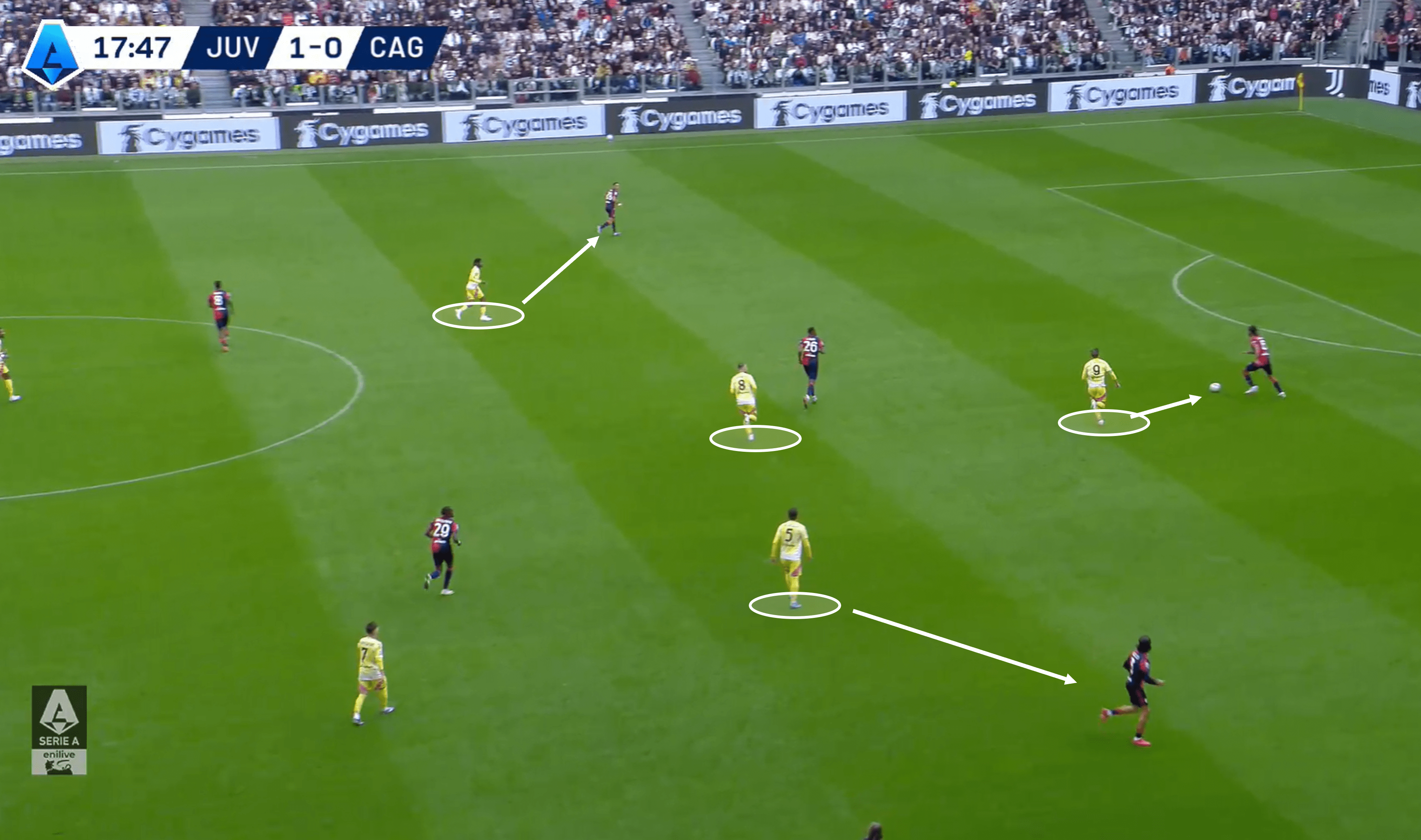
Figure 3 shows that Juve can be highly effective in their counterpress, forcing the opponent backwards in this particular example.
This example also shows us how Juventus’ midfield can be fluid in terms of positioning in these moments.
They essentially look to have the three attacking midfielders behind the forward to mark the opposition’s passing options.
Still, number five Manuel Locatelli, who is actually a deeper midfielder, is present in a makeshift higher position.
Juventus Mid-block Vs High press
As you may have guessed, Juve like to be aggressive off the ball, but the execution of such tactics is done in certain areas.
When and where have a huge role in deciding what type of press to use, which has played an essential part in their impressive defensive record.
Thus far, Juventus have recorded a PPDA of 11.37 (sixth-lowest in Serie A) and a challenging intensity of 4.8, straying just above the league-average mark.
These numbers indicate that Juve aren’t constantly pressing.
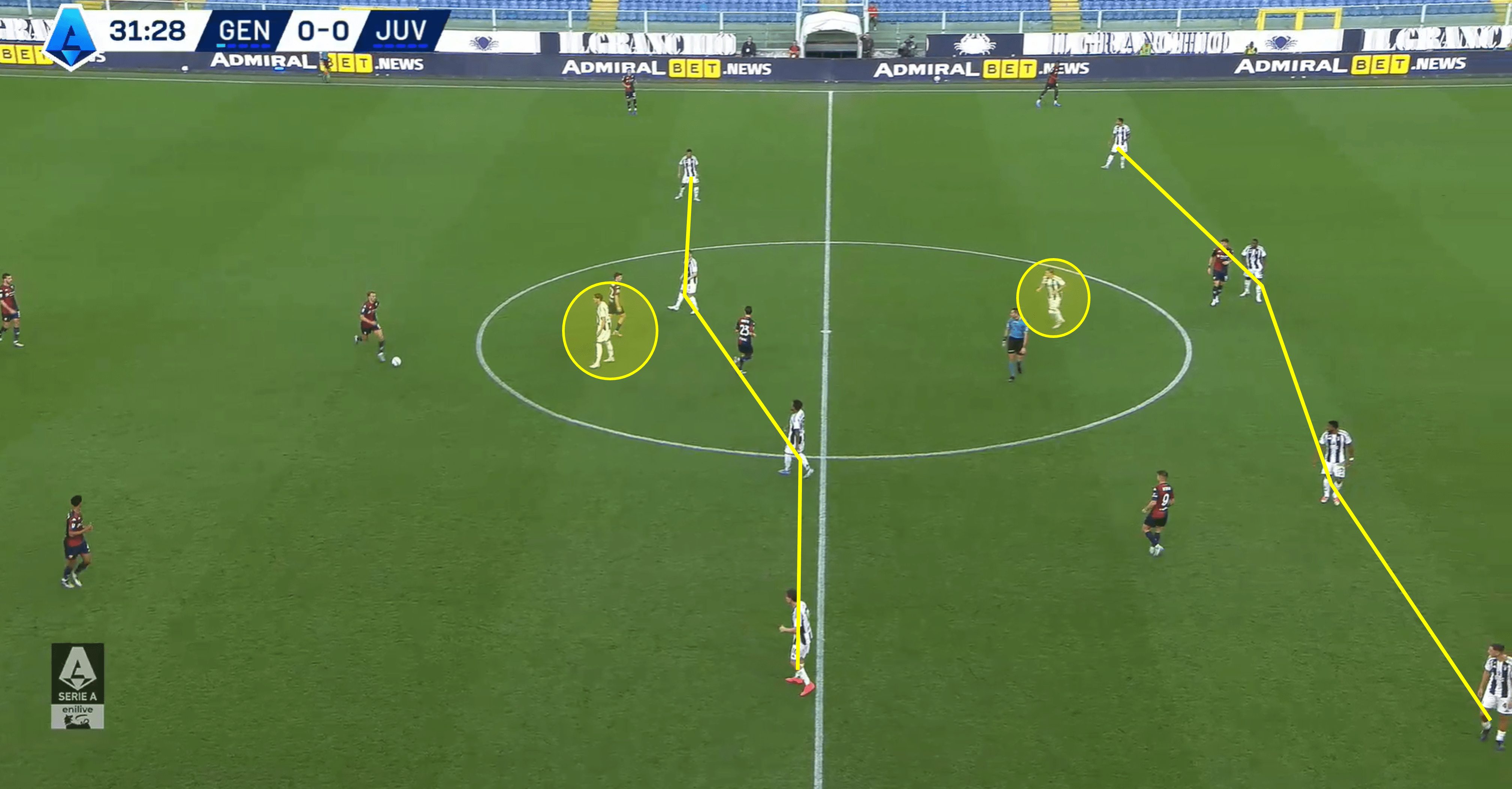
This season, Thiago Motta’s team has used a compact mid-block with some interesting and effective traits.
The space between the centre-forward and the backline is narrow as they look to force the opponent into lofted through balls.
Forcing the opponents to play backwards is another positive outcome of the mid-block, as it allows them to step up their defensive line.
In Figure 4 above, Juve were playing a 4-1-4-1, which is clearly visible in their shape – the individual roles of the centre-forward and the six are important ones.
The centre-forward looks to reduce the space between himself and his midfield teammates, giving the opponent no space to play through the thirds.
At the same time, the defensive midfielder must find the balance between protecting the back four and supporting the midfield unit.
The width of the back four is another interesting and important trait.
Where we may see some other teams adopt a narrow shape, Juventus like to be wider to deal with the opposition’s wide players.
Of course, this comes with the risk of opposition runners in behind, but Juventus are confident in the individual pace and reaction time of their defenders to deal with such a threat.
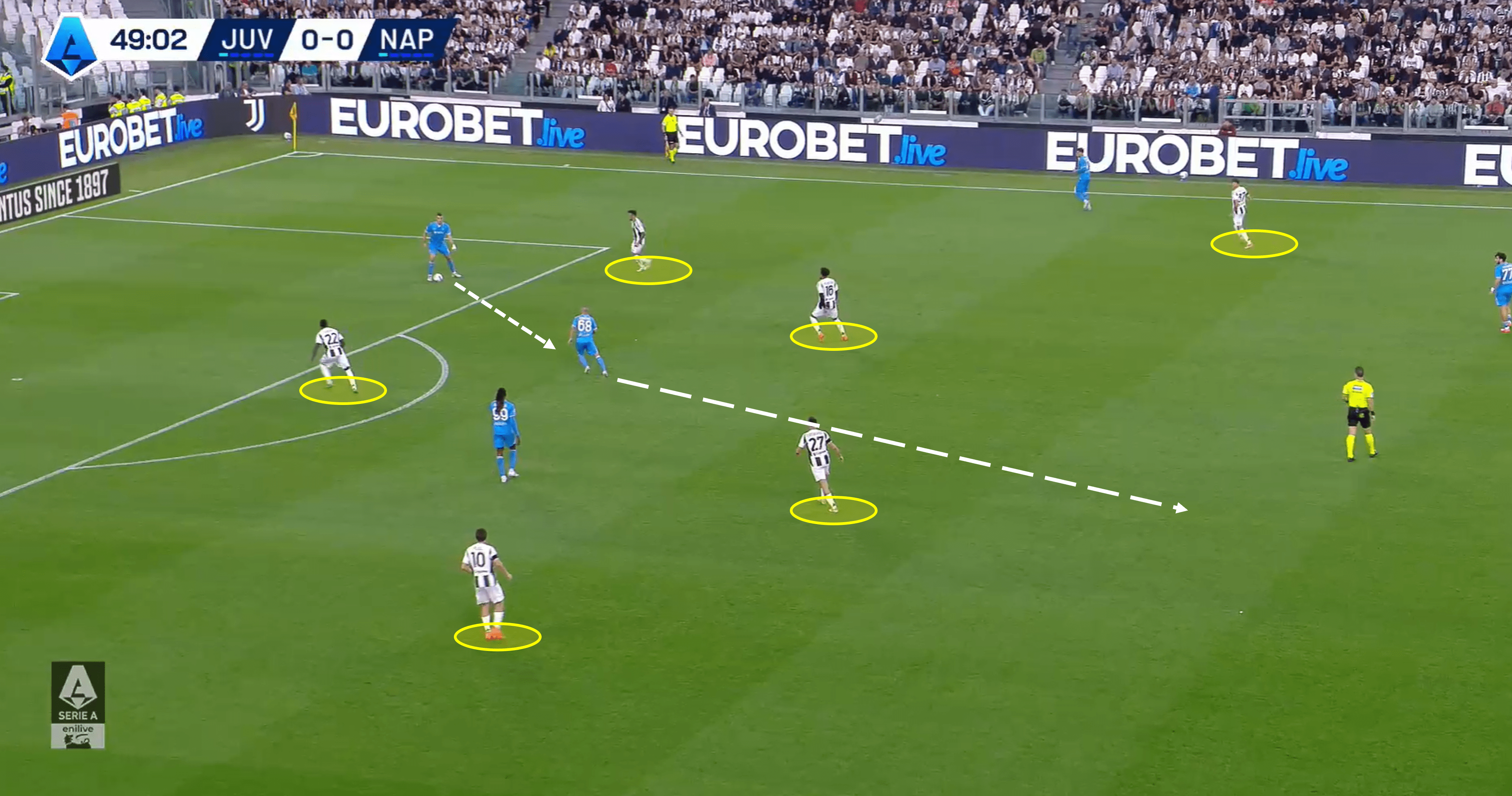
So, when do Juve look to kick things up a gear in their pressing? Figure 5 answers that.
As mentioned, where and when are two key contributing factors in the execution of a press—if the opposition plays backward because it can’t initially find a way forward, Juventus ups the ante.
Additionally, Juventus will look to press if the opponent starts with deep possession while showing little intention of progressing forward quickly—i.e., as Figure 5 shows, Napoli have deep possession with quite a stretched shape as they look to play out from the back, and Juventus have more players in that final third than the defending team does.
As with their counterpressing tactics, the aim of this high press is to force the opponent into making a mistake, which was the outcome in this particular example—Napoli were insistent on playing through the Juventus press and were essentially baited into utilising the deep midfielder.
Once the midfielder received the ball, he was immediately closed down by a black-and-white shirt, forcing him to rush his next pass—a somewhat blind pass into the middle of the park that was collected by another black-and-white shirt.
Juventus Double Pivot
In the intro of this analysis, we touched on the fact that Juventus have been deploying different formations this season, with a focus on playing four at the back,
While 3-5-2 was a common choice for then-manager Massimiliano Allegri last season, Thiago Motta has turned to either 4-1-4-1 or 4-3-3—but his most common formation has been the 4-2-3-1, which has a double pivot feature.
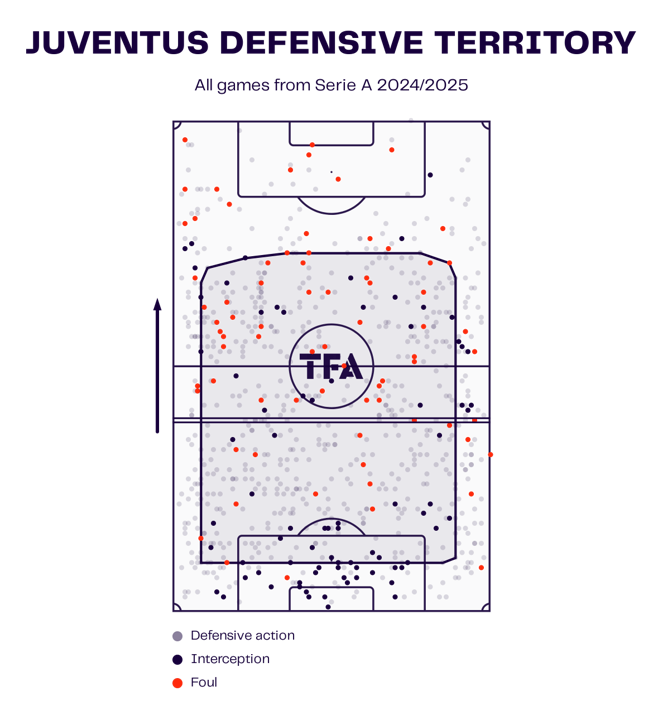
Figure 6 provides a quick and short detour while we look into Juventus’ defensive territory in Sere A this season, but it does tie into the roles of the two players in the double pivot.
The space between Juve’s box and the halfway line has very little action when it comes to interceptions, which tells you something about the activity of the two deeper midfielders when it comes to defensive duties.
Elsewhere, they make a few interceptions in the opposition half, which can be a result of the aforementioned counterpressing,
Discipline is another important part of Motta’s tactics—so far, his team ranks low in Serie A rankings for fouls made, an indication that he doesn’t just want his team to be aimlessly aggressive.
Giving cheap free kicks away simply gives the opponent the chance to gain strong control of possession.
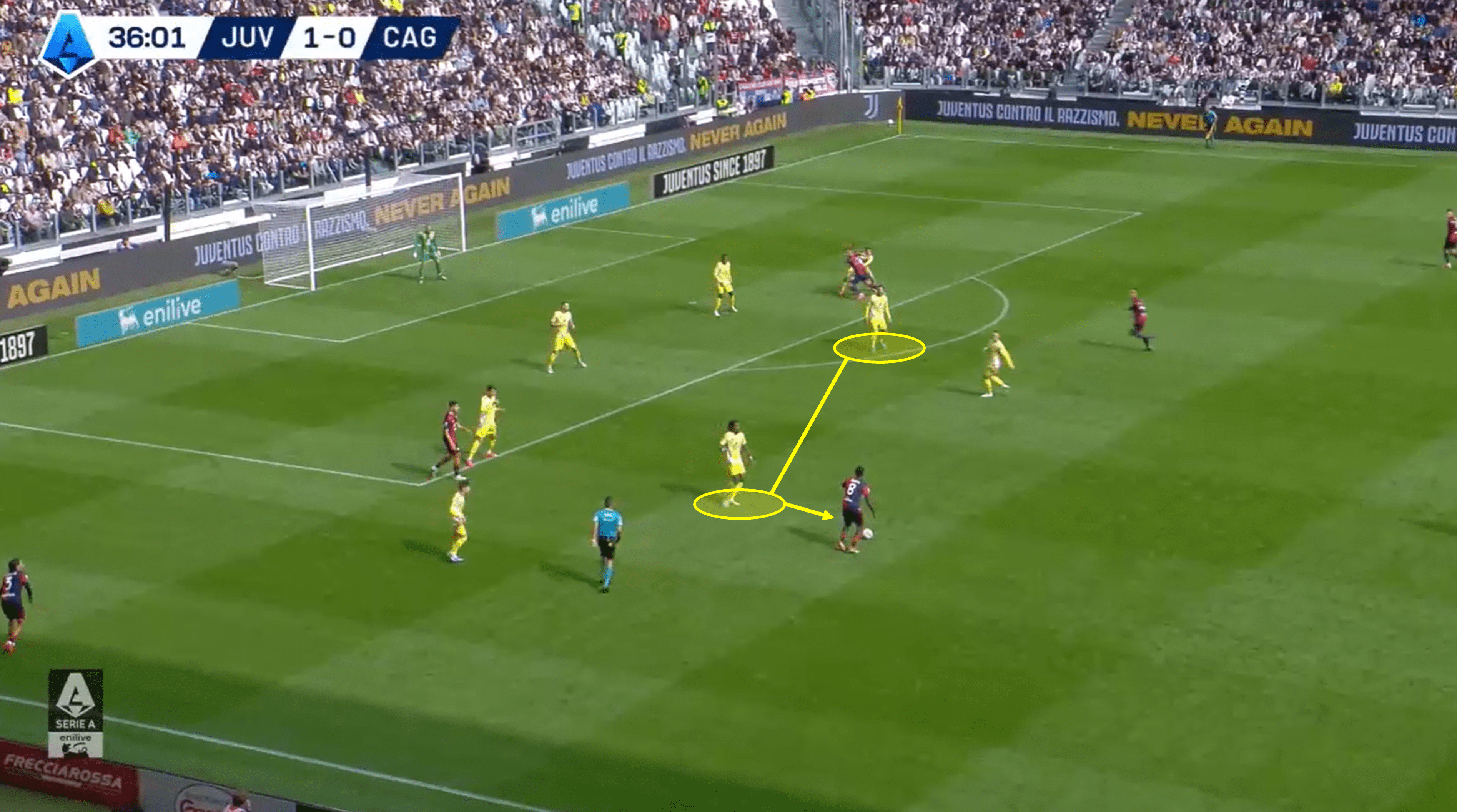
When Juve are forced to defend in their own third, the work of the two defensive midfielders plays an important role.
Figure 7 shows an example from their recent draw against Cagliari.
Locatelli lined up in the double pivot alongside Khéphren Thuram, the latter often taking on the role of enforcer or destroyer.
By that, we mean he is often the more aggressive of the pair, more direct in his defensive approach in closing possession down, while his partner looks to provide a defensive presence in front of the back four.
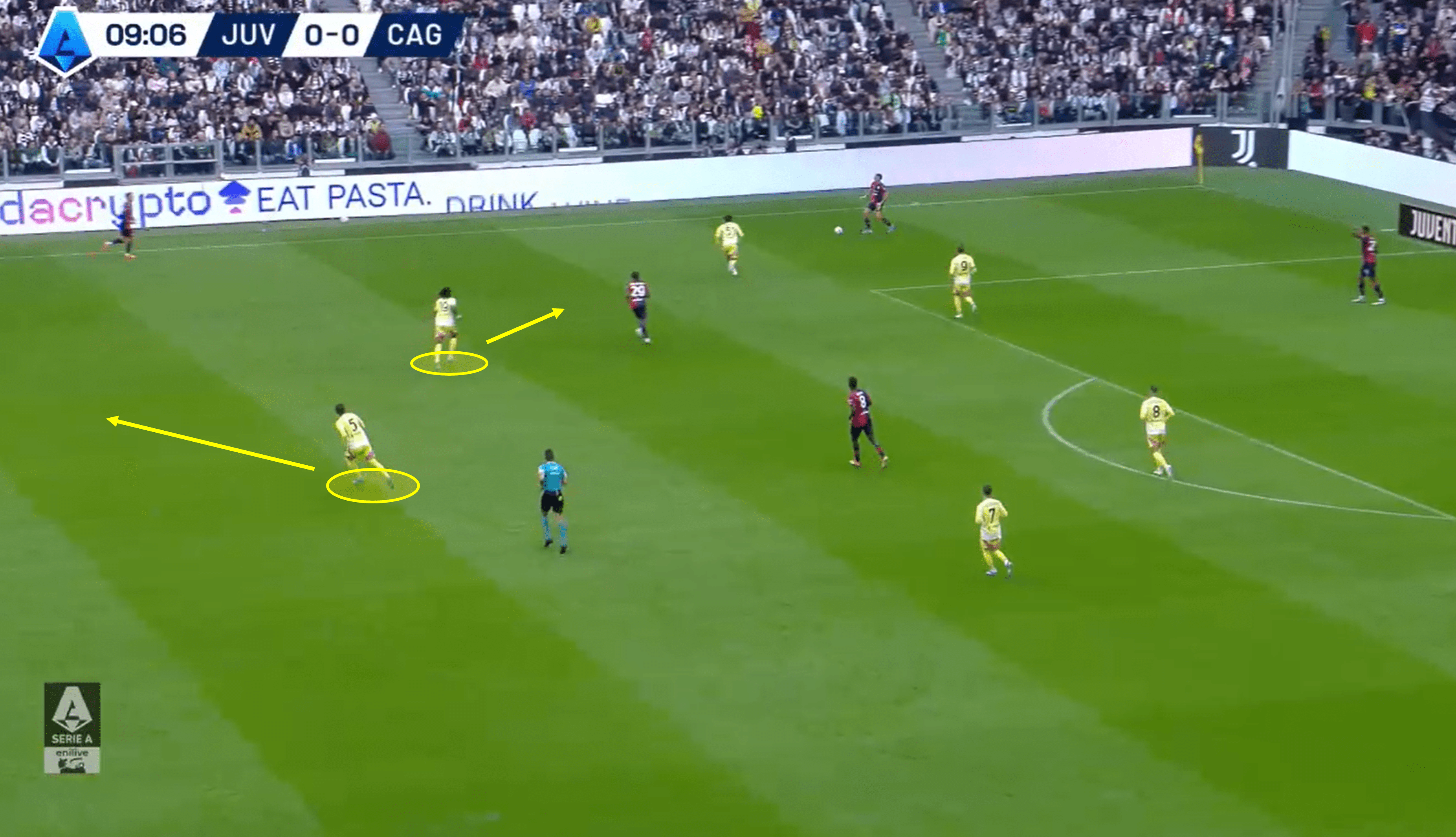
The duo also play an important role higher up the pitch.
Figure 8 shows Juventus pressing high in the fashion we discussed earlier, but this time, we’re talking about the role of the two deeper midfielders.
While Thuram pushes higher up to add presence to Juventus’ high press, marking that next potential passing option, you can see Locatelli retreating backwards.
He anticipates that the next opposition pass will be a more direct one into the halfway line.
Locatelli then looks to either cut that pass out or, if a teammate completes that task first, become a nearby passing option for said teammate.
The interesting thing in those tactics is that Thuram knew exactly when to push higher up, and Locatelli saw that as his cue to drop deeper.
Of course, the double pivot feature can also be essential and effective in possession in linking the play between defence and midfield.
Conclusion
Hopefully, this tactical analysis has provided some knowledge and insight into the defensive tactics used by Thiago Motta and Juventus this season.
It will be interesting to see just how long they can continue without conceding from open play.
If they can maintain a strong defensive record over the course of the campaign, they’ll likely find themselves in the title picture.
Juventus haven’t claimed the Serie A crown since 2019/20, but Thiago Motta has certainly started positively in his quest to rectify that.

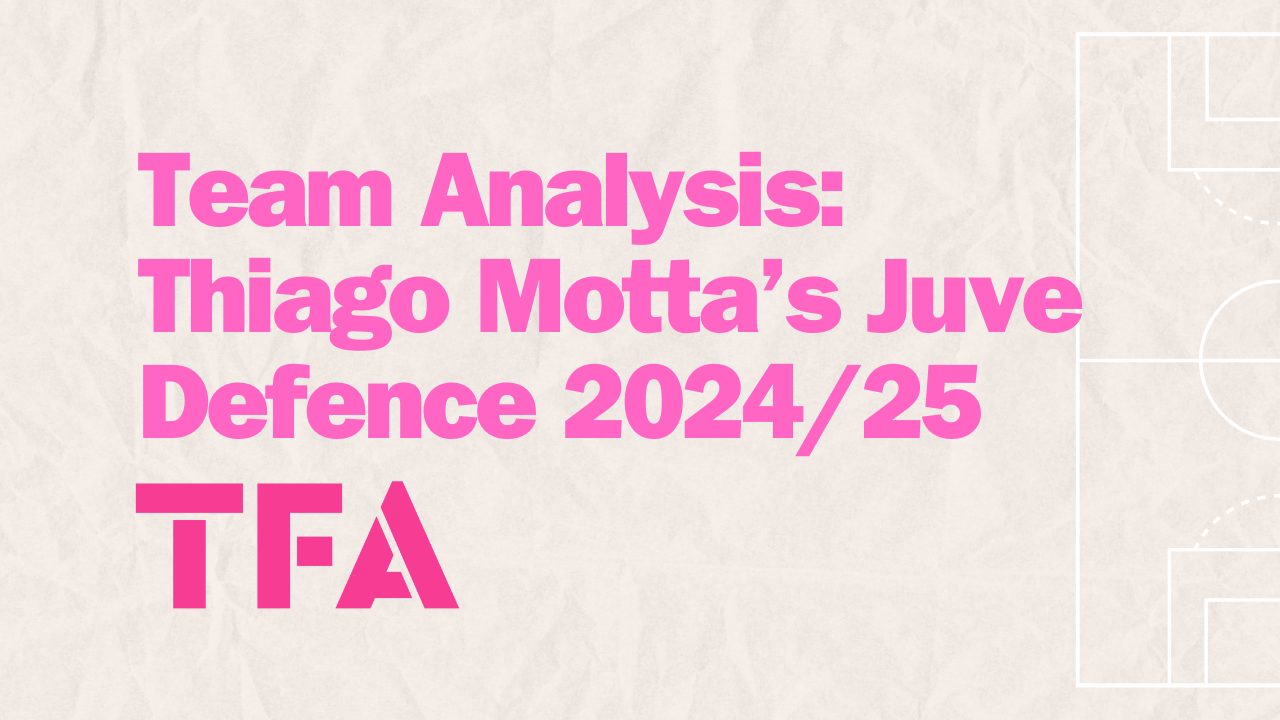




Comments